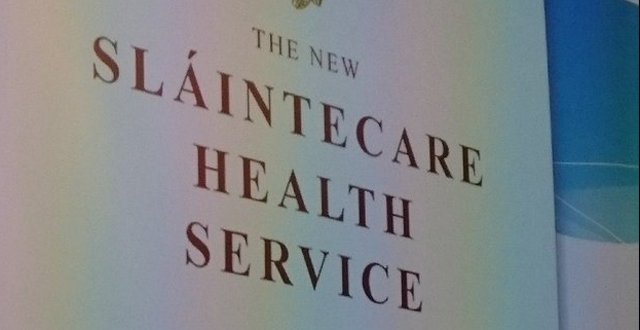
The progress implementing Sláintecare has been extremely slow due to a lack of funding and other factors, according to Brian Turner
The Sláintecare report, which maps-out an agreed cross-party vision for the Irish health system for the next 10 years, was published two years ago in May 2017. It would therefore be timely to take stock of what progress has been made on the report’s recommendations.
Despite
the report suggesting that an Implementation Office be established by July 2017
under the auspices of the Department of the Taoiseach, it was only last year that
the office was established, under the auspices of the Department of Health. An
implementation strategy was published last August, with an action plan
published this March. However, despite a lot of talk, there has not been as
much action as might have been expected two years after the original report,
which contained detailed proposals, was published.
One of
the key issues that already appears to be slowing progress is a lack of
funding. The Sláintecare report highlighted the need for €3 billion in
transitional funding and year-on-year increases bringing public healthcare
spending to €2.8 billion per year more than it was at the beginning of the
10-year period, over and above increases arising from demographic changes and
medical inflation. However, thus far,
the scale of spending increases envisaged by the report has not been seen.
There
has also been some divergence from the planned phasing of recommendations in
the report. For example, hospital inpatient charges were scheduled to be
removed in the first year of the plan, with a reduction in the Drugs Payments
Scheme (DPS) threshold in the third year. However, there was a reduction in the
DPS threshold implemented last year, and a further reduction this year, while
the hospital inpatient charges are still in place. (It is difficult however, to
ascertain exactly when the first year of the 10-year plan started — 2017, 2018
or 2019.)
One of
the key recommendations of the plan was an expansion of free GP care at the
point of use, which was to begin in year one of the plan. However, since the
report’s publication, this envisaged expansion has not happened, and it would
appear that negotiations on a new GP contract, with which this measure is
intertwined, will take some time yet.
Another
central plank of the report was an increase in capacity, and the Health Service Capacity Review, published last year, gave further details of
this. Among the recommendations of this report were an increase of 2,590 public
hospital beds by 2031, along with an additional 11,500 long-term residential
care beds and 2,500 additional short-term residential care beds.
Recent
developments in relation to the new National Children’s Hospital are a cause
for concern in this regard, both in terms of the cost of providing this
additional capacity and the knock-on delays in other capital projects arising
from the over-run on this project (which in turn will raise the costs of these
delayed projects due to tender cost inflation).
Increased
capacity is also envisaged in terms of the healthcare workforce, with the Health Service Capacity Review 2018 calling for an increase of 48 per cent
in the primary care workforce, including, among other things, a 29 per cent
increase in GP numbers, an 89 per cent increase in practice nurses and a 67 per
cent increase in public health nurses (all figures are whole-time
equivalents). Meanwhile, the Sláintecare
plan itself envisages an increase of 593 consultants, albeit from year four. In
this context, recent reports of a recruitment and overtime embargo by the HSE
due to the continued cost of increased recruitment last year do not bode well.
In order
to ensure sufficient capacity in the system, recruitment and retention of staff
will be key. As already mentioned, negotiations on a new GP contract are
underway but unlikely to conclude any time soon. Possibly even more challenging
will be a new consultant contract, which will be required for another key
recommendation of the Sláintecare report — the removal of private practice from
public hospitals. The report of the de Buitléir group on this issue is
anticipated shortly, but previous experience in relation to consultant contract
negotiations in the absence of such a dramatic change in terms suggests that
any new contract will take time to hammer out.
Furthermore,
there is increasing evidence that workforce shortages are not just affecting
the Irish health system, but others internationally as well. We are therefore
competing in an ever-more competitive global marketplace for skilled healthcare
professionals, bringing the recruitment and retention issue into ever sharper
focus, as evidenced by the industrial action by nurses and midwives earlier
this year.
So where
does this leave Sláintecare, almost two years on from its publication? Despite the initial optimism arising from the
cross-party nature of the report, progress on its implementation has been very
slow, there appears to be some reluctance to put in place adequate funding, and
major challenges await in the coming years.





Leave a Reply
You must be logged in to post a comment.